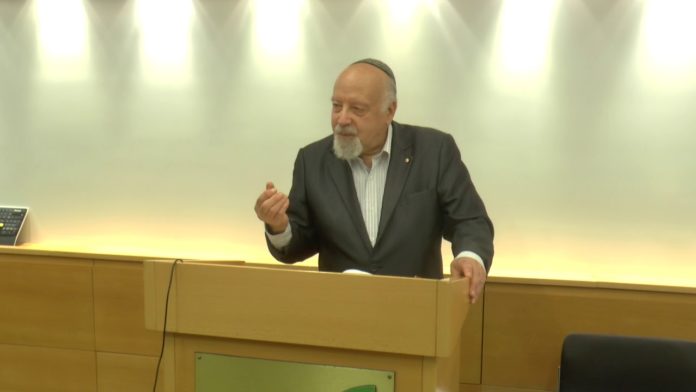
SPACE TRAVEL
Q. Is space travel halachically permissible?
A. It would seem from the T’nach that space is a prohibited realm: the heavens are “the heavens of the Lord” (Psalm 115:16), though Nachmanides says that “heavens” in this sense is a spiritual realm, not the physical cosmos: a state, not a place.
Nonetheless, the Biblical and rabbinic authors are adamant that neither the people of Babel nor Nebuchadnezzar should have wanted to ascend to heaven (Gen. II; Isaiah 14:13-15; Pesachim 94a, Sanhedrin 109a).
Our reality is that space travel is more than science fiction. Is it a risk to human life, bearing in mind the halachic warning against entering a risky situation?
The element of danger depends on what science and technology tell us, and even with the best scientific backing things can go wrong, as we know from the fate of Ilan Ramon and his fellow astronauts.
The element of risk has not yet been conclusively overcome, but in an optimal situation the religious believer would recall the Psalmist’s confidence that “If I ascend to heaven, even there shall thy hand guide me” (Psalm 139:8-10) and would have faith that space travel would increase man’s awe of the Creator (Psalm 19:2).
SHEHECHEYANU FOR A CONVERT
Q. Why do converts recite the “Shehecheyanu” blessing when entering Judaism?
A. A person who acquires a new home or garment says the Shehecheyanu blessing, as does one who eats a new fruit or does a mitzvah for the first time (Shulchan Aruch, Orach Chayyim 223:3-4, 225:3). A kohen beginning his service in the sanctuary says the blessing because of the new elevation in his status (though other views explain his blessing differently).
The Chatam Sofer (Responsa Orach Chayyim 55) rules that a Bar-Mitzvah who fulfils the mitzvah of tefillin for the first time should say Shehecheyanu, thinking of all the subsequent mitzvot he will carry out.
The Radvaz’s ruling that a convert should recite Shehecheyanu on being accepted into Judaism is explained by Rabbi IJ Weiss on the basis that if a single mitzvah merits a Shehecheyanu, surely this applies to the beginning of a lifetime of Torah and mitzvot (Minchat Yitzchak 1:129).
HAMANTASCHEN
Q. Why are Hamantaschen eaten on Purim?
A. Hamantaschen, three-cornered sweet pastries filled with poppyseed or jam, might originally have had no Purim connection at all; the name may be a misunderstanding of “mohntasch” (“a pocket of poppyseed”).
But since eating them on Purim became widespread, the name was changed to Hamantaschen in order to link them with the Purim story.
Some say the name is from “tash (kocho shel) Haman” – “may Haman’s strength become weak”.
Hamantaschen are also called “oznei Haman” (“Haman’s ears”); Abravanel knew of delicacies baked in the shape of human ears and dipped in honey.
Immanuel of Rome says there was a legend that the Jews cut off Haman’s ears after he was hanged (this is unlikely to have happened, though an old Italian law required that a thief’s ears be cut off if he were caught).
The three corners of the Hamantaschen are explained by some as recalling Haman’s three-cornered hat and by others as referring to the three Biblical Patriarchs, whose merit saved the Jews of Persia from destruction.
By Raymond Apple
Rabbi Raymond Apple was for many years Australia’s highest profile rabbi and the leading spokesman on Jewish religious issues. After serving congregations in London, Rabbi Apple was chief minister of the Great Synagogue, Sydney, for 32 years. He also held many public roles, particularly in the fields of chaplaincy, interfaith dialogue and Freemasonry, and is the recipient of several national and civic honours. Now retired, he lives in Jerusalem and blogs at http://www.oztorah.com









